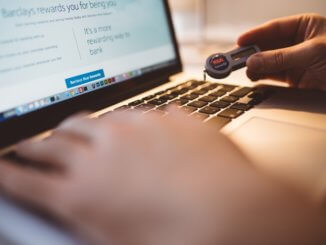
Unfortunately, for many people, it’s far too easy to end up in debt. If you owe a considerable amount of money to several creditors at once, it can be a huge financial burden. You are also responsible for interest rates, which can rack up even more money on top of what you already owe.
Although this may seem like a hopeless situation, there is an option available – a personal loan for debt consolidation. Getting a personal loan for debt consolidation can help you escape the trap of debt once and for all. However, you first have to know how to go about getting the loan. Below are some tips to get a personal loan to use for debt consolidation.
1. Check Your Credit Reports and Credit Score
The first thing you should do when you are planning on getting a personal loan, even before you begin looking, is to check your credit reports and credit score. You can obtain your credit report for free from the three major credit bureaus, Equifax, Experian and TransUnion, once a year by ordering them online at AnnualCreditReport.com. You can also use Credit Karma to check your credit score for free.
2. List Your Loan and Credit Card Balances
Make note of the annual percentage rates (APRs) and the monthly payment amounts for all of your debts. This is necessary to get a better understanding of how much money you may need when you apply for the personal loan.
3. Research Lenders That Offer Personal Loans in the Amount You Need
You should research the different lenders that offer personal loans in the amount you need. Some banks or financial institutions will offer specific loan amount ranges for individuals with excellent credit, while other lenders may offer a lesser loan amount if the person has only fair credit. It’s worth noting that credit unions generally have fewer requirements than banks when you are looking for a loan.
4. Compare Interest Rates from Lenders
Some lenders offer lower interest rates than others. It’s wise to shop around so that you can find the most favorable interest rates possible. For example, some lenders such as Lending Club and SoFi, which offer interest rates as low as 5.99 and 6.20 percent, respectively, let prospective borrowers check the rates for which they may qualify without risk.
5. Use a Debt Consolidation Calculator
A debt consolidation calculator can provide insight into how much you might benefit from a personal loan. A single lump sum monthly payment can help you save time vs managing multiple monthly payments. However, it’s also wise to find a loan that has the best interest rates and terms to suit your needs.
6. Apply for the Best Loan
After you have thoroughly explored your options and settled on one particular loan, apply for it. If you are approved and receive the money, you can use it to pay back the various creditors you owe money to.
7. Avoid Amassing More Debt
This may seem like a no-brainer, but you should avoid amassing additional debt. It can put you right back in the same situation of owing burdensome amounts of money.
8. Keep Old Accounts Open
Finally, you should keep all your old credit accounts open, even if you don’t plan on using them again. Closing out accounts can negatively impact your credit score.
Consolidating debt with a personal loan can be a great option if you are riddled with multiple debts. Whether you have multiple credit card balances or are having difficulty paying off specific loans, a personal loan can help free you from your financial burden.



